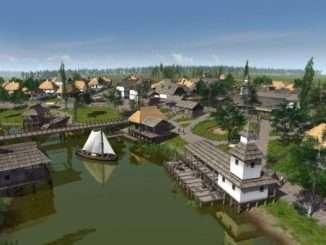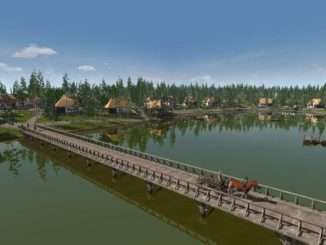
This guide explains the financial system in the game Ostriv. It offers a way to view and use specific measurements to help manage in-game money. Some ideas for future game features are also included.
Economist Guide
Show Me the Money
How much money do you have? You look at the treasury balance and read the number, and that is what you say, right? Not quite… you have money elsewhere – it’s in all those houses on the map. If you need it, you can raise rents and prices and… Voila! There is more money in your treasury.
The money in your treasury is good for two things:
- It is a warehouse for money that is circulating in and out of the households – comes in via sales and rent, flows out as salaries and social aid. You need enough to make sure the money flows in and out without interruption, and keeps households equipped with enough cash to operate. These flows do not change the money supply of your city – it just moves it around.
- You can buy imports (sell exports) with it – helpful in the early game and for goods you can’t produce, but this DOES change the money supply of your city. Ideally you consistently export more than you import, as this will result in a steady increase of your money supply (more on this later).
The money in the game consists of money you control (treasury and households) and money you want (other cities). That’s where the money is.
Houston, We Have a Problem!
If your treasury is running low, there are three possible reasons:
- You over-expanded and your money supply is too small for the size of your economy. Households need enough money to buy stuff, so if you build out really quickly and dilute the money thinly between households, you’ll have problems. Each family arrives with $10, which expands the money supply somewhat, but I prefer more buffer per household – maintaining household balances at roughly $20-$25.
- You have your flows between the treasury and households out of whack, and some households are getting rich (and others are probably quite poor). You only keep control of money if rent and sales brings in more than salaries pay out. You can then redistribute cash using social aid to keep everyone square.
- You have been consistently importing more than you export, which has been draining your money supply. Once you have secured food and iron in the early game to tide you over your first couple of years, all other imports (animals, etc.) are arbitrary and should only be undertaken when you are a net exporter. Your early goals are food self-sufficiency (to stop importing food) and cash from exports (first Charcoal – not enough on its own – then Sunflower Oil).
Purchasing Power – It’s All Relative
In reality, economists calculate purchasing power to compare the value of money across different areas. Ostriv has two areas: your village and other places. If your village’s prices are lower than the import/export market, households need less money to function. Therefore, lowering your prices allows more households to exist with the same amount of money.
Build your town hall as early as possible, and then cut salaries, rent and prices. A lot. Set things up such that you are paying out less than you take in. The specific levels can be adjusted annually based on last year’s performance, but in my experimental run (more below) I initially set my levels to:

and later updated them to:

More thought on how to best tweak these settings to come, I suspect.
Example Run Through
I played the first 10 years of the game measuring some metrics so you could see an example of how this works. Some notes on the gameplay:
- The first few years are all about food self sufficiency (fish, a farm, cattle for fallow fields) and the population growth required to support agricultural operations. My only export for the first four years is Charcoal. My imports are iron, buckwheat and salo (cheap food) and starter cattle until sufficiency is established.
- I am able to export Sunflower Oil in 1725, and exports now exceed imports. I expand population slowly while building industrial capacity and my money supply.
- By 1731, I have almost all industry (except lime/tannery/shoes/tack) and agriculture operating (no pigs). At this point, my next steps will be to add the remaining industries and grow population.
Looking at the overall money supply and it’s distribution between the treasury and households over the 10 year period, we get the following:

Looking at imports and exports over the period, we can see that we are reducing our money supply in the early years, but pushing net exports up (and restraining imports) results in an increasing money supply starting in 1724:

If we break down the flows in and out of households, we can see that the basic strategy is drain the households mercilessly, and then give them the money back using aid as they need it (usually at the end of the year). This prevents any household from accumulating excess cash, so all of our funds are available for use.

You can see the adjustment I made to rent and pricing in 1725 on the blue line.
Where to Find The New Panel for Delivery Orders?
When you place your first special delivery order, a new button will appear on the right side of your screen. There, you can open the new delivery orders list.
Old orders should appear there too.





Be the first to comment